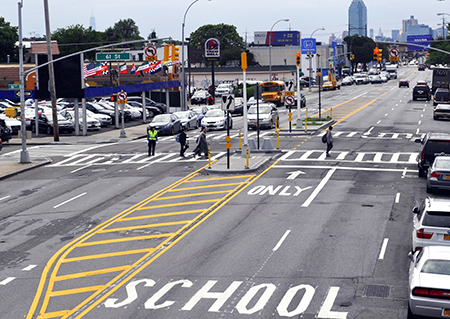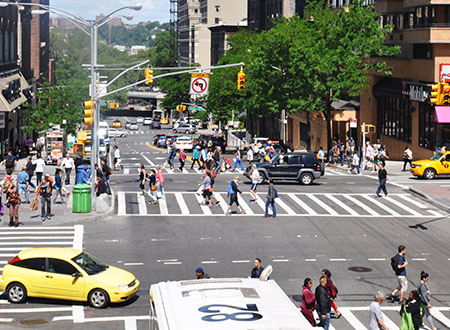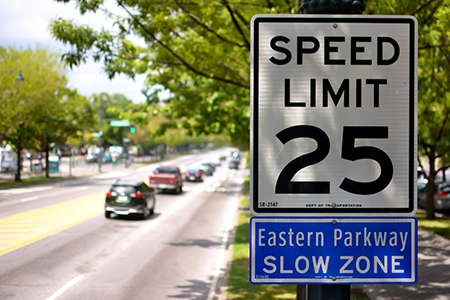
 Vision Zero
311
Vision Zero
311
 Search all NYC.gov websites
Search all NYC.gov websites
Street Design
Better street design can dramatically improve safety for everyone. New York City's street design is managed by the Department of Transportation.
As part of Vision Zero, DOT is making major strides in safer street design. DOT is adding safety engineering improvements at 50 intersections and corridors, creating 25 new arterial slow zones, and implementing eight new neighborhood slow zones, among many other improvements.
Data shows that the safest street designs are those that make the expected behavior clear and separate drivers from bicyclists and pedestrians. DOT's redesigns often include updated markings to organize traffic, and curb extensions or islands to give pedestrians a place to stand.
Here are just a few examples of safety updates DOT has recently made to intersections and corridors throughout the city.

61st Street / Northern Boulevard
In December 2013, an eight-year-old boy was struck by a truck while crossing this intersection. This engineering project showcases some of the City's most effective safety techniques. It includes two new pedestrian islands, simplified vehicle movements, increased visibility for drivers approaching the intersection, and a signal modification that gives pedestrians a "head start" while crossing the street. Nine more intersections along Northern Boulevard are scheduled to receive similar improvements before the end of 2014.

Broadway / West 96th Street
In early 2014, two fatalities occurred within 10 days at this intersection. In order to improve pedestrian safety at this high pedestrian volume intersection, DOT implemented improvements such as expanded pedestrian space, simplified vehicle movements, and new cross walks.

Arterial Slow Zones
Historically, arterials make up only 15% of total mileage, but account for 60% of pedestrian fatalities. The Arterial Slow Zone program utilizes a combination of tools, including a lower speed limit, signal timing changes to discourage speeding, distinctive signs and enforcement by the NYPD to prevent traffic fatalities and improve safety on some of New York City's most high crash streets. DOT adjusted signal timing along these corridors, making it consistent with the new speed limit while maintaining mobility on these heavily used corridors and preventing diversions to residential side streets.
The locations also benefit from enforcement by the NYPD, with temporary speed boards installed at key locations to alert motorists of the new speed limit. The program also features distinctive blue-and-white signs with the name of the corridor, complementing the agency's existing Neighborhood Slow Zone program.
